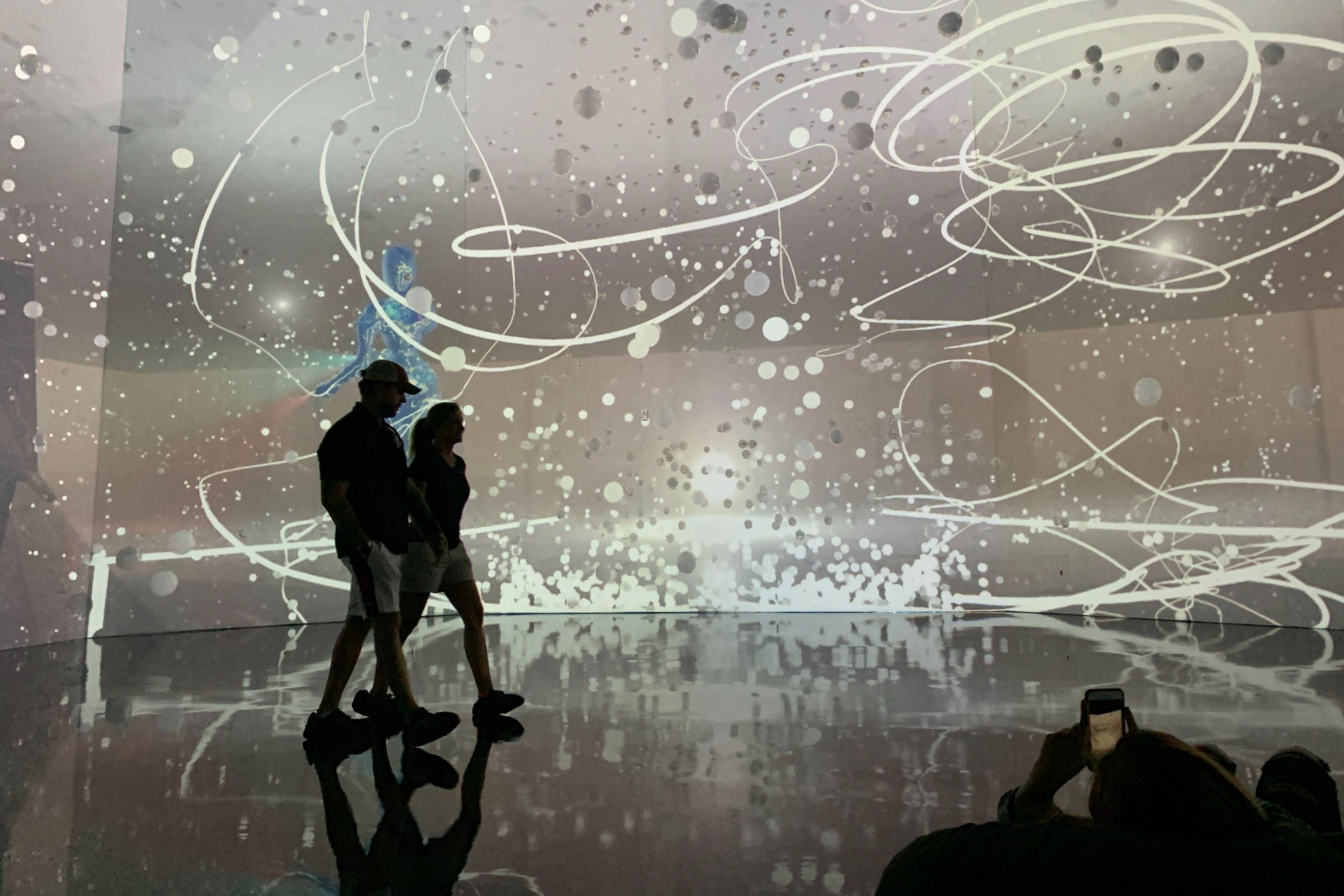When I imagine a dance, I picture a group of synchronized dancers, all moving together in a fluid motion. There’s always people — or at least one person. How could you release emotion through dance, without people dancing on a stage?
ARTECHOUSE showed me exactly how this weekend.
On Saturday, the immersive museum opened “Lucid Motion,” an exhibit by Japanese artist group Daito Manabe x Rhizomatiks Research. The exhibit explores human movement — mainly dance — driven by technology. Like many other exhibits at ARTECHOUSE, “Lucid Motion” is interactive and encourages the audience to not just watch, but partake.
I love visiting ARTECHOUSE, mainly because the exhibits are extremely weird. The moment I walked into its main, spacious room on Saturday I knew I was going to experience something different. An alien-like figure was dancing across the ginormous screen. She was blue, then black, then multiple different colors. As her hands moved, she traced lines around the screen with her movements.
[Read more: Concerts, art shows and fashion: NextNOW Fest delivered two days of talent]
There were multiple figures, at times, all doing the same dance. It was a beautiful, fluid show. The literally larger-than-life dancer was rooted in the movements of a real-life woman, whom the artist studied. Even though I knew the image was just a screen, there was so much depth to it. The dancing figure looked so real, I thought I could reach out and touch her.
In the side rooms, there were smaller yet interactive pieces of art. In the “media lab,” guests were given an iPad to use as they walked around. Every station had a piece of art, and when someone held the iPad up to it, a figure would appear on the screen and dance on top of or around the station. It was fun to play with, especially because each dance was different and every figure popped up like a little surprise.
There were also huge screens in side rooms that mirrored the movements I made and projected them onto the wall. It made me feel like that same larger-than-life dancer from the main room of the exhibit. (I’ve always wanted to be a dancer but never had the grace or talent, so it was a real moment for me.)
[Read more: At UMD’s Art Gallery, Lia Halloran pays homage to early women in astronomy]
My only criticism of the exhibit was that it wasn’t as big as I expected it to be. There wasn’t as much to look at as there was when I last visited ARTECHOUSE. But, the upside of the smaller scale was that it made me think more about the art I did see — and I probably could have watched the dancing alien-lady hundreds of times before it got old.
Colors and shapes and lines were bouncing around the main screen throughout her performance. All the balls and lines during the performance oddly reminded me of the universe. The bright, scattering dots looked like shooting stars.
Sitting on one of ARTECHOUSE’s bean bag chairs on the ground, watching the techno-performance with ambient music in my ears, left me pondering: What is art? What is dance? What I was watching didn’t fit into my interpretations of either art or dance. But, I thoroughly enjoyed it. The cosmic dance was a beautiful display of art in motion.
“Lucid Motion” will be playing at ARTECHOUSE until Dec. 1. The exhibit pushes boundaries and makes viewers reassess their own definitions of dance. Technology-driven performances and exhibits are an evolving frontier of art, and I am excited to see how far artists will be able to go.




